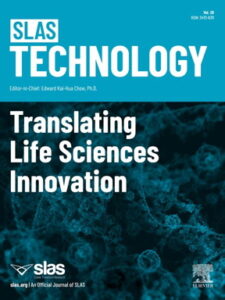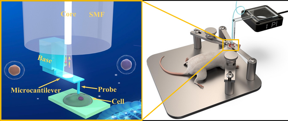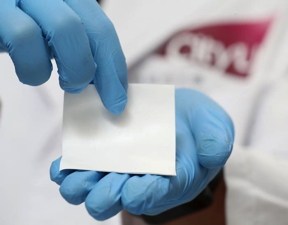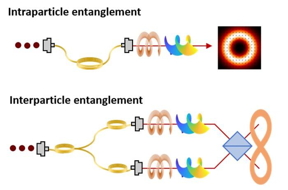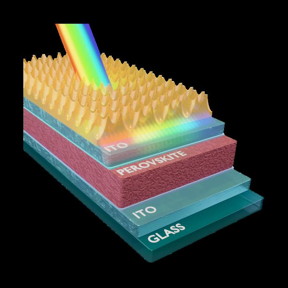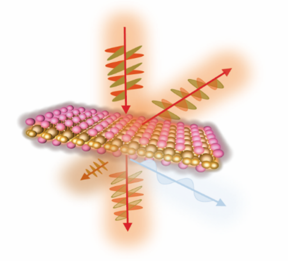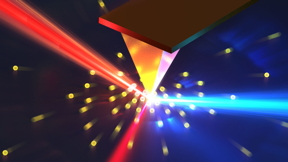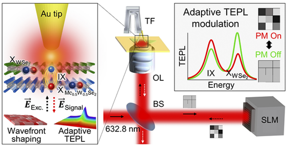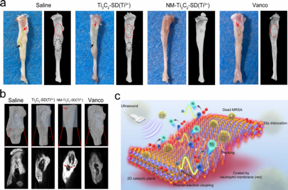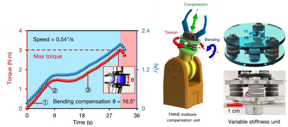Home > Press > Focused ion beam technology: A single tool for a wide range of applications
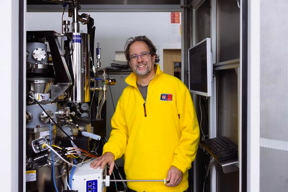 |
| Physicist Gregor Hlawacek, head of the EU project FIT4NANO, is responsible for a state-of-the-art facility at the HZDR where he can produce and analyze nanostructures using a particularly finely focused ion beam. CREDIT Oliver Killig/HZDR |
Abstract:
Processing materials on the nanoscale, producing prototypes for microelectronics or analyzing biological samples: The range of applications for finely focused ion beams is huge. Experts from the EU collaboration FIT4NANO have now reviewed the many options and developed a roadmap for the future. The article, published in “Applied Physics Review” (DOI: 10.1063/5.0162597), is aimed at students, users from industry and science as well as research policy makers.
Focused ion beam technology: A single tool for a wide range of applications
Dresden, Germany | Posted on January 12th, 2024"We realized that focused ion beams can be used in many different ways, and we thought we had a good overview at the start of the project. But then we discovered that there are many more applications than we thought. In many publications, the use of focused ion beams is not even explicitly mentioned, but is hidden in the methods section. It was detective work," says Dr Katja Höflich, physicist at the Ferdinand-Braun-Institut and the Helmholtz-Zentrum Berlin (HZB), who coordinated the comprehensive report. "In particular, we found work from the 1960s and 1970s that was ahead of its time and unjustly forgotten. Even today, they still provide important insights".
The report provides an overview of the current state of focused ion beam (FIB) technology, its applications with many examples, the most important equipment developments and future prospects. "We wanted to provide a reference work that is useful for academic research and industrial R&D departments, but also helps research management to find their way in this field," says Dr Gregor Hlawacek, group leader at the Institute of Ion Beam Physics and Materials Research at Helmholtz-Zentrum Dresden-Rossendorf (HZDR). Hlawacek leads the FIT4NANO project, an EU project on FIB technologies, in which the authors of the report are involved.
From basic research to the finished component
FIB instruments use a focused ion beam of typically two to 30 kiloelectronvolts (keV). With its small diameter in the nanometer and sub-nanometer range, such an ion beam scans the sample and can change its surface with nanometer precision. FIB instruments are a universal tool for analysis, maskless local material modification and rapid prototyping of microelectronic components. The first FIB instruments were used in the semiconductor industry to correct photomasks with focused gallium ions. Today, FIB instruments are available with many different types of ions. An important application is the preparation of samples for high-resolution, nanometer-precision imaging in the electron microscope. FIB methods have also been used in the life sciences, for example to analyze and image micro-organisms and viruses with FIB-based tomography, providing deep insights into microscopic structures and their function.
FIB instruments are constantly evolving towards other energies, heavier ions and new capabilities, such as the spatially resolved generation of single atomic defects in otherwise perfect crystals. Such FIB processing of materials and components has enormous potential in quantum and information technology. The range of applications, from fundamental research to the finished device, from physics, materials science and chemistry to life sciences and even archaeology, is absolutely unique. "We hope that this roadmap will inspire scientific and technological breakthroughs and act as an incubator for future developments," says Gregor Hlawacek.
####
For more information, please click here
Contacts:
Media Contact
Simon Schmitt
Helmholtz-Zentrum Dresden-Rossendorf
Office: 351-260-3400
Expert Contacts
Dr. Gregor Hlawacek
Helmholtz-Zentrum Dresden-Rossendorf
Office: ++49 351 260 3409
Dr. Katja Höflich
Ferdinand-Braun-Institut and Helmholtz-Zentrum Berlin (HZB)
Copyright © Helmholtz-Zentrum Dresden-Rossendorf
If you have a comment, please Contact us.Issuers of news releases, not 7th Wave, Inc. or Nanotechnology Now, are solely responsible for the accuracy of the content.
| Related Links |
| Related News Press |
News and information
![]() Researchers develop technique to synthesize water-soluble alloy nanoclusters January 12th, 2024
Researchers develop technique to synthesize water-soluble alloy nanoclusters January 12th, 2024
![]() Rice University launches Rice Synthetic Biology Institute to improve lives January 12th, 2024
Rice University launches Rice Synthetic Biology Institute to improve lives January 12th, 2024
Chemistry
![]() Researchers develop technique to synthesize water-soluble alloy nanoclusters January 12th, 2024
Researchers develop technique to synthesize water-soluble alloy nanoclusters January 12th, 2024
Physics
![]() Scientists use heat to create transformations between skyrmions and antiskyrmions January 12th, 2024
Scientists use heat to create transformations between skyrmions and antiskyrmions January 12th, 2024
![]() 'Sudden death' of quantum fluctuations defies current theories of superconductivity: Study challenges the conventional wisdom of superconducting quantum transitions January 12th, 2024
'Sudden death' of quantum fluctuations defies current theories of superconductivity: Study challenges the conventional wisdom of superconducting quantum transitions January 12th, 2024
Possible Futures
![]() 'Sudden death' of quantum fluctuations defies current theories of superconductivity: Study challenges the conventional wisdom of superconducting quantum transitions January 12th, 2024
'Sudden death' of quantum fluctuations defies current theories of superconductivity: Study challenges the conventional wisdom of superconducting quantum transitions January 12th, 2024
![]() Rice University launches Rice Synthetic Biology Institute to improve lives January 12th, 2024
Rice University launches Rice Synthetic Biology Institute to improve lives January 12th, 2024
Nanomedicine
![]() Researchers develop technique to synthesize water-soluble alloy nanoclusters January 12th, 2024
Researchers develop technique to synthesize water-soluble alloy nanoclusters January 12th, 2024
![]() Presenting: Ultrasound-based printing of 3D materials—potentially inside the body December 8th, 2023
Presenting: Ultrasound-based printing of 3D materials—potentially inside the body December 8th, 2023
![]() VUB team develops breakthrough nanobody technology against liver inflammation December 8th, 2023
VUB team develops breakthrough nanobody technology against liver inflammation December 8th, 2023
Discoveries
![]() 'Sudden death' of quantum fluctuations defies current theories of superconductivity: Study challenges the conventional wisdom of superconducting quantum transitions January 12th, 2024
'Sudden death' of quantum fluctuations defies current theories of superconductivity: Study challenges the conventional wisdom of superconducting quantum transitions January 12th, 2024
![]() Development of zinc oxide nanopagoda array photoelectrode: photoelectrochemical water-splitting hydrogen production January 12th, 2024
Development of zinc oxide nanopagoda array photoelectrode: photoelectrochemical water-splitting hydrogen production January 12th, 2024
Materials/Metamaterials/Magnetoresistance
![]() 2D material reshapes 3D electronics for AI hardware December 8th, 2023
2D material reshapes 3D electronics for AI hardware December 8th, 2023
![]() Finding the most heat-resistant substances ever made: UVA Engineering secures DOD MURI award to advance high-temperature materials December 8th, 2023
Finding the most heat-resistant substances ever made: UVA Engineering secures DOD MURI award to advance high-temperature materials December 8th, 2023
Announcements
![]() Researchers develop technique to synthesize water-soluble alloy nanoclusters January 12th, 2024
Researchers develop technique to synthesize water-soluble alloy nanoclusters January 12th, 2024
![]() Scientists use heat to create transformations between skyrmions and antiskyrmions January 12th, 2024
Scientists use heat to create transformations between skyrmions and antiskyrmions January 12th, 2024
![]() Bridging light and electrons January 12th, 2024
Bridging light and electrons January 12th, 2024
Interviews/Book Reviews/Essays/Reports/Podcasts/Journals/White papers/Posters
![]() 'Sudden death' of quantum fluctuations defies current theories of superconductivity: Study challenges the conventional wisdom of superconducting quantum transitions January 12th, 2024
'Sudden death' of quantum fluctuations defies current theories of superconductivity: Study challenges the conventional wisdom of superconducting quantum transitions January 12th, 2024
![]() Development of zinc oxide nanopagoda array photoelectrode: photoelectrochemical water-splitting hydrogen production January 12th, 2024
Development of zinc oxide nanopagoda array photoelectrode: photoelectrochemical water-splitting hydrogen production January 12th, 2024
Nanobiotechnology
![]() Researchers develop technique to synthesize water-soluble alloy nanoclusters January 12th, 2024
Researchers develop technique to synthesize water-soluble alloy nanoclusters January 12th, 2024
![]() Presenting: Ultrasound-based printing of 3D materials—potentially inside the body December 8th, 2023
Presenting: Ultrasound-based printing of 3D materials—potentially inside the body December 8th, 2023
![]() VUB team develops breakthrough nanobody technology against liver inflammation December 8th, 2023
VUB team develops breakthrough nanobody technology against liver inflammation December 8th, 2023
- SEO Powered Content & PR Distribution. Get Amplified Today.
- PlatoData.Network Vertical Generative Ai. Empower Yourself. Access Here.
- PlatoAiStream. Web3 Intelligence. Knowledge Amplified. Access Here.
- PlatoESG. Carbon, CleanTech, Energy, Environment, Solar, Waste Management. Access Here.
- PlatoHealth. Biotech and Clinical Trials Intelligence. Access Here.
- Source: http://www.nanotech-now.com/news.cgi?story_id=57441
- :has
- :is
- :not
- :where
- $UP
- 000
- 10
- 12th
- 17th
- 28
- 30
- 3d
- 7th
- 8th
- a
- absolutely
- academic
- academic research
- accuracy
- acoustic
- Act
- advance
- against
- ahead
- AI
- aimed
- Alloy
- also
- an
- analysis
- analyze
- analyzing
- and
- Application
- applications
- Archaeology
- ARE
- Array
- article
- AS
- At
- atomic
- authors
- available
- award
- awarded
- away
- basic
- BE
- Beam
- been
- berlin
- between
- biology
- breakthrough
- breakthroughs
- but
- by
- CAN
- capabilities
- carbon
- Center
- CGI
- challenges
- change
- chemistry
- click
- co2
- collaboration
- COM
- comment
- commitment
- compatible
- components
- comprehensive
- Condensed matter
- constantly
- content
- contribution
- conventional
- Conversion
- coordinated
- correct
- could
- create
- credit
- Current
- Current state
- Death
- December
- deep
- del
- delivery
- departments
- Design
- develop
- developed
- Development
- developments
- develops
- device
- Devices
- different
- direct
- discover
- discovered
- DoD
- dr
- effects
- Electronics
- Emissions
- end
- energy
- Engineering
- enormous
- equipment
- Ether (ETH)
- EU
- Even
- EVER
- evolving
- example
- examples
- experts
- explicitly
- Facility
- field
- films
- Find
- findings
- First
- fluctuations
- focused
- For
- forgotten
- found
- Foundation
- from
- function
- fundamental
- future
- future developments
- futuristic
- GAS
- generating
- generation
- Germany
- gif
- good
- Graphene
- greenhouse gas
- Group
- had
- Harvesting
- Have
- he
- head
- help
- helps
- Hidden
- high-resolution
- hope
- http
- HTTPS
- huge
- hydrogen
- if
- image
- Imaging
- important
- improve
- in
- Inc.
- incubator
- industrial
- industry
- inflammation
- information
- information technology
- inside
- insights
- inspire
- Institute
- instruments
- into
- involved
- IT
- ITS
- January
- jpg
- laser
- launches
- leader
- Leads
- lenses
- Life
- Life Sciences
- light
- links
- Liver
- local
- made
- make
- Makers
- management
- many
- material
- materials
- Matter
- mentioned
- methods
- Microscope
- more
- most
- mRNA
- nanotechnology
- net
- New
- news
- Noble
- novel
- November
- now
- of
- offset
- oliver
- on
- opened
- opportunities
- Optimize
- Options
- or
- Other
- otherwise
- overview
- particular
- particularly
- Paul
- perfect
- PHP
- Physics
- plato
- Plato Data Intelligence
- PlatoData
- please
- policy
- Policy Makers
- Post
- posted
- potent
- potential
- power
- Precision
- preparation
- press
- Press Release
- printing
- processing
- produce
- producing
- project
- prompts
- prospects
- prototypes
- prototyping
- provide
- provides
- providing
- publications
- published
- Quantum
- quantum technology
- R&D
- range
- rapid
- realized
- reduces
- reference
- release
- Releases
- report
- research
- researchers
- resolved
- responsible
- return
- reviewed
- Rice
- roadmap
- Room
- s
- Save
- says
- scans
- Science
- SCIENCES
- scientific
- Search
- Section
- Secures
- semiconductor
- sensor
- setup
- Share
- Shows
- significant
- single
- SIX
- small
- solely
- solid
- speed
- start
- State
- state-of-the-art
- Still
- structures
- Students
- Study
- submit
- such
- sudden
- Superconductivity
- Surface
- synthesize
- synthetic
- Systems
- Tandem
- team
- technique
- technological
- Technologies
- Technology
- than
- that
- The
- The Future
- their
- then
- There.
- they
- this
- thought
- time
- to
- today
- tomography
- tool
- toronto
- towards
- transformations
- two
- types
- typically
- unique
- Universal
- university
- us
- use
- used
- users
- using
- Vaccine
- viruses
- wanted
- was
- Wave
- Way..
- ways
- we
- WELL
- were
- which
- WHO
- wide
- Wide range
- will
- wisdom
- with
- Work
- Yahoo
- you
- zephyrnet










